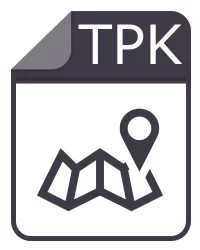TPK (Tile Package)
GISBox is a one-stop 3D GIS data editing, conversion and publishing platform that supports editing in multiple GIS formats such as OSGB/GEOTIFF/RVT, converting to 3DTiles/Terrain and publishing.
Introduction
TPK (Tile Package) file is a file format for packaging raster or vector map tiles used by ESRI’s ArcGIS platform. It is mainly used for viewing maps offline or embedding maps in applications, and the extension is “.tpk”. Tiles are a collection of images that divide a map or aerial photo into different zoom levels, and TPK is a single compressed file containing all these images.

File Structure
The TPK file has the following internal data structure:
- conf.xml: tile configuration file (defines zoom level, spatial reference system, etc.)
- layers folder: contains map tile images (usually PNG or JPEG format)
- info folder: contains metadata and attribute information
- thumbnail (optional): thumbnail
- iteminfo (similar to TPKx format), etc.
Pros
- Available for offline use: Maps can be displayed even in an environment without a network connection by loading the TPK file into the application.
- Highly compatible with ArcGIS products: Seamlessly integrated with ESRI products, including ArcGIS Desktop, ArcGIS Pro, and ArcGIS Runtime SDK.
- Simple structure and easy to use: Since everything is in one file, it is easy to distribute, manage, and back up.
- Preserve custom styles: Stylized tile images can be delivered as is, allowing greater freedom of expression.
Cons
- **Poor updatability: **Once created, a TPK is a static file that cannot be partially updated, so it needs to be regenerated every time the map changes.
- **File size can be large: **Tiling high-resolution maps at multiple zoom levels can result in very large files.
- **Not suitable for network delivery: **Formats such as MBTiles or cloud-optimized GeoTIFF may be more suitable for network-based map delivery.
Application Scenario
TPK files are mainly suitable for mobile GIS applications and offline field surveys. For example, it is widely used in situations where a map needs to be displayed stably regardless of the communication environment, such as displaying geographic information in mountainous areas or disaster sites where network connectivity is difficult, or for field surveys by local government officials. It can also be used to embed custom map representations directly into applications. In particular, the use of TPK is generally recommended when developing applications that utilize the ArcGIS Runtime SDK.
Example
- Create TPK files using ArcGIS Pro.

- Example of a TPK file.

File Opening Mode
- TPK file opened in ArcMap.

- Import the TPK file.
